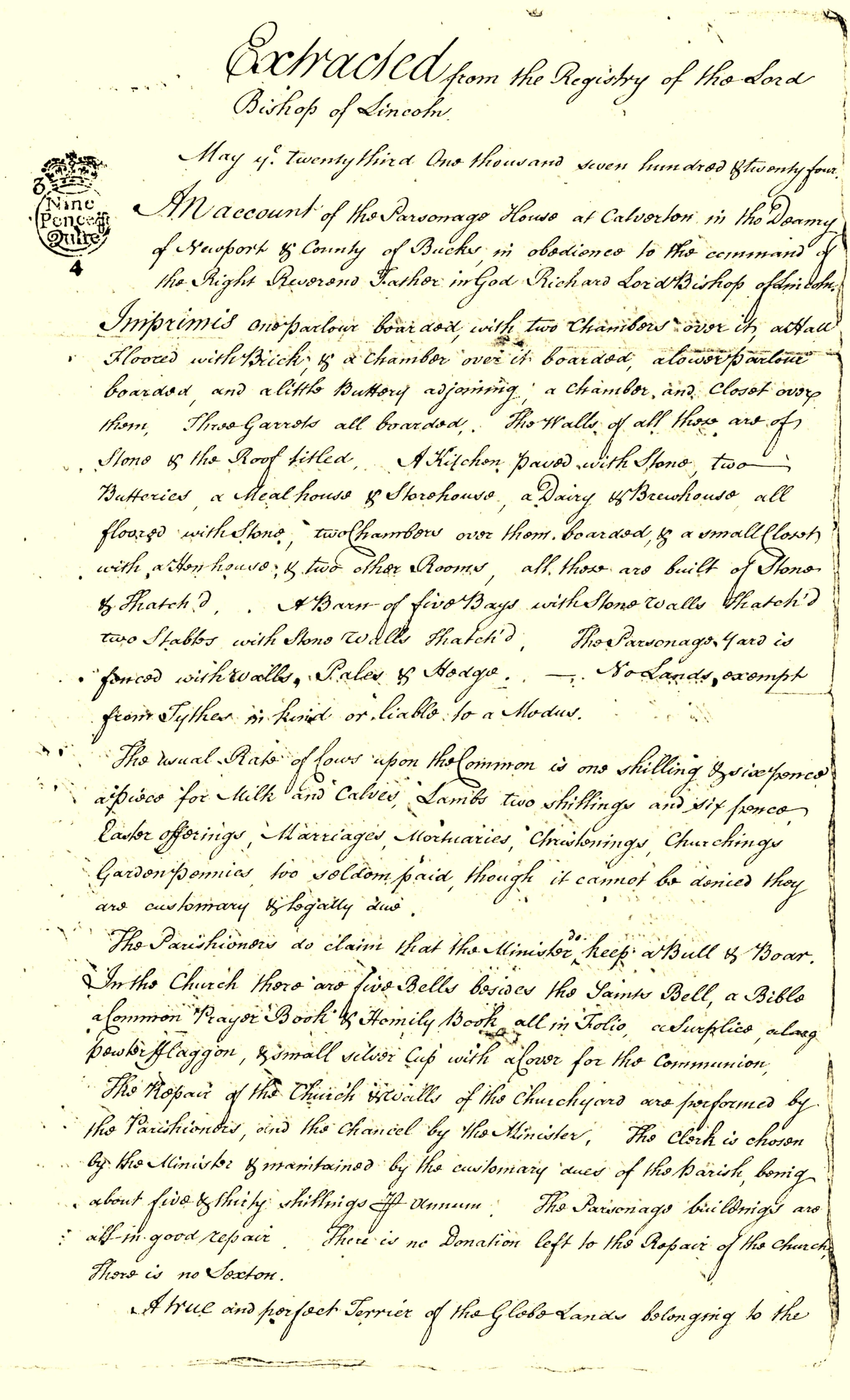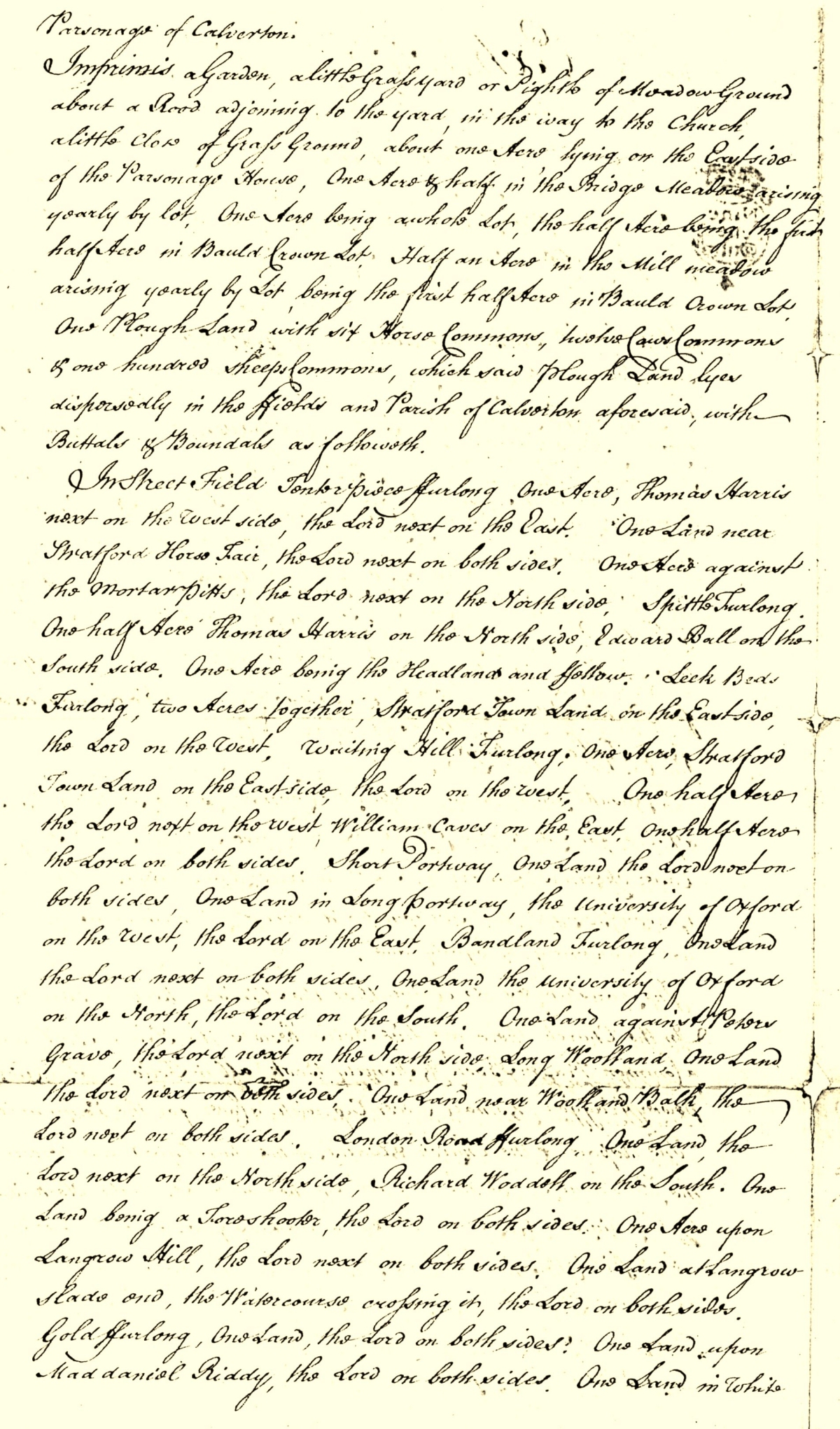Covering an inventory of the Parsonage, the Church and all the associated Glebe lands
Page 1. Introduction, buildings descriptions and inventories, Church dues, and Church officers.
A Glebe Terrier is a term specific to the Church of England. It is a document, usually a written survey or inventory, which gives details of glebe, lands and property in the parish owned by the Church of England and held by a clergyman as part of the endowment of his benefice, and which provided the means by which the incumbent could support himself and his church. Typically, glebe would comprise the parsonage, fields and the church building itself, its contents and its graveyard. The word glebe itself is from Middle English, originally from Latin gleba or glaeba “clod, land, soil”. “Terrier” is derived from the Latin terra, “earth”.

Remainder of the Terrier
(click on thumbnails to see full size pages with transcriptions)

The following section is the first part of the Glebe listings for Street Field one of the three major open fields of the village. Judging by surviving individual field names, and the fact that the ‘Street’ was most probably Watling Street, puts this field between the main road and the village, running up against the borders of Stony Stratford (covering what is now Calverton End).

Page 3 covers the balance of those Glebe lands located in Street Field and then describes those located in Middle Field, the second of the large openn village fields. Although the Glebe holdings are not as extensive here, some surviving field names such as Little First Danell and Great Second Danell, substitute nicely for short Daniel Furlong and Long Daniel Furlong respectively.
Middle field then seems to have crossed the brook – ‘One Land shooting into the Brook’ – and then extended to the West of Lower Weald taking in the modern Dunstad (for Dunshead) and likewise Gravel Pit (for Stonepitts). However the most memorable field must be the magnificently named ‘Short Shittern Arse Furlong’ – leaving all pondering upon the original scatological event which must have led to its naming.
Blaconsfield, being the third of the large village open fields, confirms its presence to the west of the village through the use of a actual surviving field Sharps which is backed up by further references to Beachampton associated fieldnames.

Page 4 continues with the large open field Blaconsfield with many more references to Beachampton Upperway (surviving modern name Beachampton Way).
A final confirmation of the location of this last of the open village fields comes with the original Short Blacon Furlong which must have existed somewhere among the modern surviving fields of First Blacon, Little Blacon and Long Blacon.
Great Common finally lists those Glebe holdings in what is believed to be the large area of common land which was located between Calverton and Loughton Parish to its South and bordered by Watling Street to its North. This is evidenced by fieldnames such as Top Common, Middle Common and Lower Common as well as North Pitts Furlong and Mortar Pits Furlong, which are references to the limestone quarries and lime mortar manufacturers seen in later years stretched out along Watling Street.
Calverton Parsonage Terrier – Page 2
Calverton Parsonage Terrier – Page 3
Calverton Parsonage Terrier – Page 4
